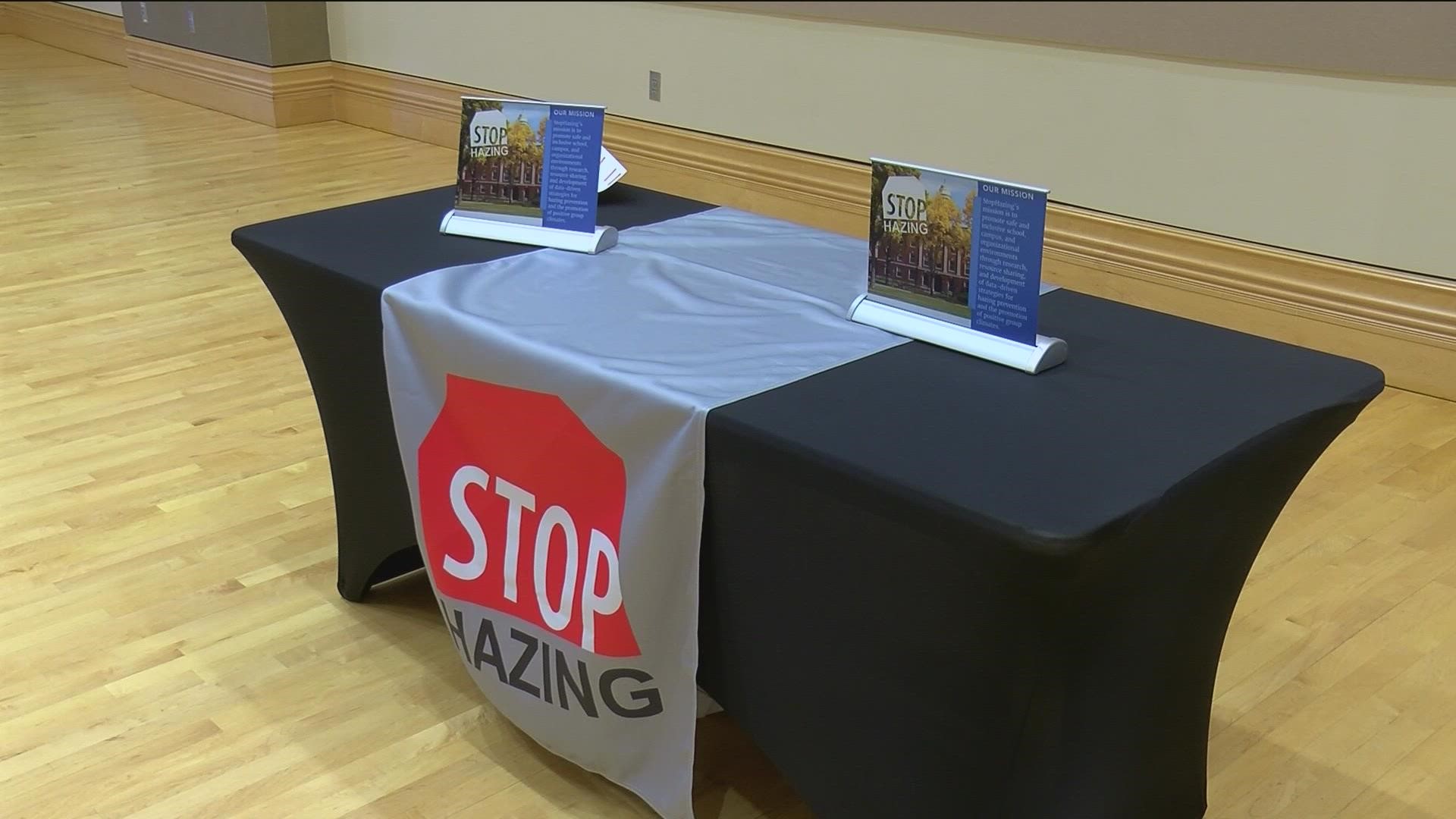BOWLING GREEN, Ohio — Nearly 200 educators, coaches and other organizational leaders spent their Tuesday at Bowling Green State University attending the first ever Ohio Anti-Hazing Summit.
The summit happened about one year and five months after BGSU sophomore Stone Foltz died as a result of hazing at an off-campus party.
The word "eradicate" came up a lot at the summit. School leaders across the state want to put a stop to hazing.
BGSU President Rodney Rogers said there are three main ways schools and organizations can help stop hazing: education, reporting incidents and outreach.
Rogers said a further step to take with outreach is to continuously follow up to make sure people don't stop talking about anti-hazing practices.
"We have been working at anti-hazing strategies at this campus, as so many campuses do, each and every year for so long," Rogers said.
He said it is important to keep anti-hazing messages "current and fresh and in people's minds."
Rogers said Ohio is a leader right now when it comes to hazing prevention because of Collin's Law, the state's first anti-hazing law Gov. Mike DeWine signed into law on July 6, 2021.
But there is still further education to do, Rogers said.
"Making sure that we get the parents and community members listening and they know how to report, they understand how to do outreach to us and to report to us," he said. "And for them to know from an education standpoint, what to look out for."
The keynote speaker, Elizabeth Allan, said collective action is what will eradicate hazing.
Allan is a professor of higher education at the University of Maine. She traveled to BGSU to provide information about how to help schools and campuses prevent hazing because, she emphasized, it is preventable.
It's a matter of helping others understand what it is, what the signs are and what to do when you see it. She said mandatory and external reporting is crucial. It's about being transparent with students and parents after a hazing incident happens.
Allan said others need to be helped with understanding what hazing is, what the signs are and what to do when you see it.
"We all need to work together to be part of that change, to break the cycle," she said. "To disrupt the idea that hazing is just a tradition or just an initiation or just some harmless pranks. Because we all know that it is much broader than that. It's dangerous, it can be very harmful."
The Ohio Anti-Hazing Summit was open to college professionals across the state, as well as educators teaching kindergarten through 12th grade.
Hazing might not look the same for college students and kindergartners, but leaders said the earlier students are taught about the dangers of hazing and how to prevent it, the sooner it can be stopped.

